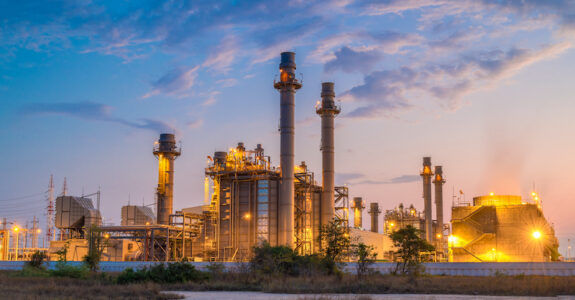
Signs Point to USEPA Lifting a 2004 Stay Affecting Certain Stationary Combustion Turbines
March 1, 2022
By: Blake Ericson & Brian Toth
The current EPA’s priorities include tackling the climate crisis, acting to advance Environmental Justice and enforcing environmental laws, and ensuring compliance, among others. With that we’ve seen an increase in inspections, enforcement actions and rulemaking activity. One such rulemaking activity that is anticipated in the near future is the lifting of a stay enacted in 2004 that deferred compliance requirements for certain subcategories of combustion turbines under the National Emissions Standard for Hazardous Air Pollutants (NESHAP) for Stationary Combustion Turbines – CFR 40 Part 63 Subpart YYYY (the “CT MACT” or “NESHAP YYYY”).
In 2004 EPA finalized NESHAP YYYY, which subjected new or reconstructed stationary combustion turbines located at major sources of HAPs to a formaldehyde emission limit of 91 parts per billion (ppb) via initial and annual compliance testing, as well as parametric monitoring, recordkeeping and reporting requirements. Shortly after finalizing NESHAP YYYY, EPA stayed the requirements for certain subcategories of turbines: new lean premix gas-fired turbines, new diffusion flame gas – fired turbines and new diffusion flame oil-fired turbines. Such turbines have likely not ever been tested to assess compliance with the 91-ppb formaldehyde emission limit.
There was a lack of regulatory activity on NESHAP YYYY until 2019, when EPA proposed its Risk and Technology Review (RTR) rule for NESHAP YYYY, and at the same time proposed lifting the 2004 stay. In 2020 EPA acted on the RTR rule by finding no changes to the emission limit or compliance requirements necessary, but declined to lift the stay – indicating that would be done via subsequent rulemaking. EPA has indicated that a final rule lifting the stay may be issued very soon.
What Impacts Does This Have on My Organization?
One of the immediate impacts is that some turbines will have to perform testing for formaldehyde for the first time. While there are several approved source testing methods that may be sufficient, many existing methods cannot get low enough detection limits for accurate and precise testing. Unsure of what method is right for your turbine? Fourier transform infrared spectroscopy (FTIR) with optic and filter upgrades provides the answer. These instruments deliver real-time data with ultra-low detection levels. Montrose was the first to utilize these advanced instruments in the field and has since performed dozens of low-formaldehyde tests on several turbine sites.
This multi-component, real time measurement is a trusted technique for gaseous hazardous air pollutants (HAPs), volatile organic compound (VOC) emissions from stationary sources, and non-organic volatile compounds. The FTIR can potentially identify and quantify any gas that absorbs infrared light, and the system can measure more than hundreds of HAPs.
How Can I Prepare?
The time to be proactive is NOW. Determining applicability of the standard and evaluating associated permit implications, putting monitoring, recordkeeping and reporting system in place, and performing testing takes time. Utilizing FTIR StarBoost™ technology to measure actual emissions at low detection levels can not only assess compliance with the 91 ppb formaldehyde emissions limit but may also provide a facility the option of reassessing their HAP potential emissions and major source status. If you believe your turbines are possibly subject to NESHAP YYYY once the stay is lifted, there are many things you can do now to be prepared. As you plan your annual compliance test and/or RATA, please consider incorporating the Subpart YYYY formaldehyde testing into the annual required program to save mobilization costs.
With decades of experience in permitting, compliance and testing , Montrose Environmental Group has the experience and the technology needed to assist your organization. For more information, please contact Blake Ericson, bericson@montrose-env.com or Brian Toth, bdtoth@montrose-env.com.


